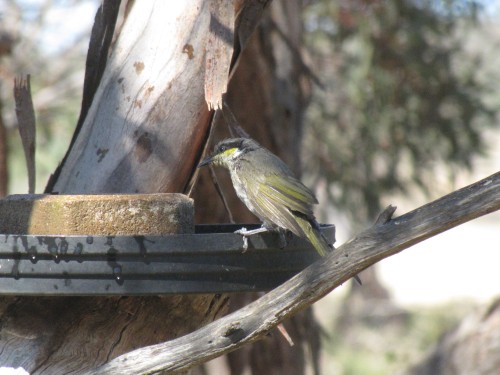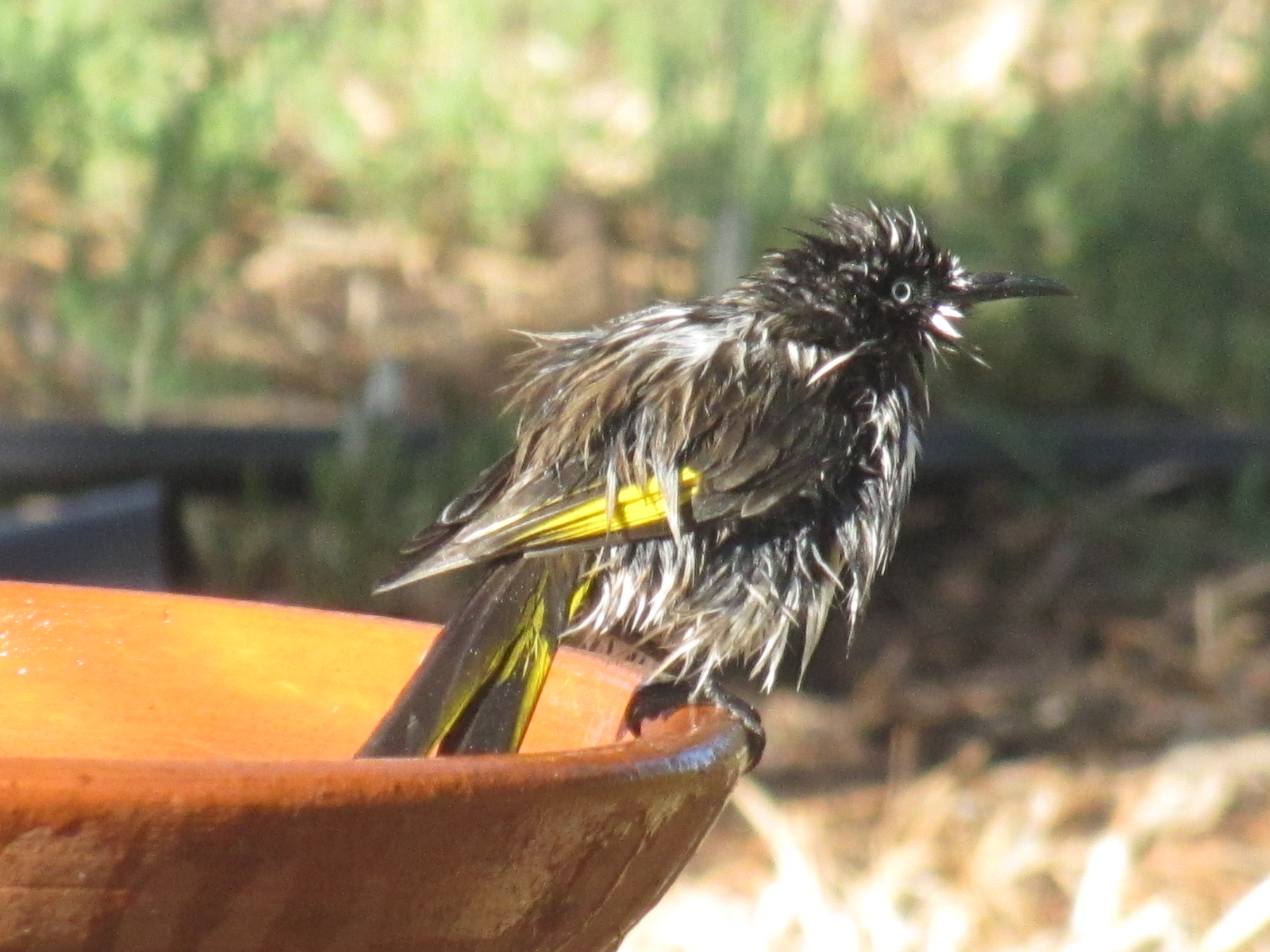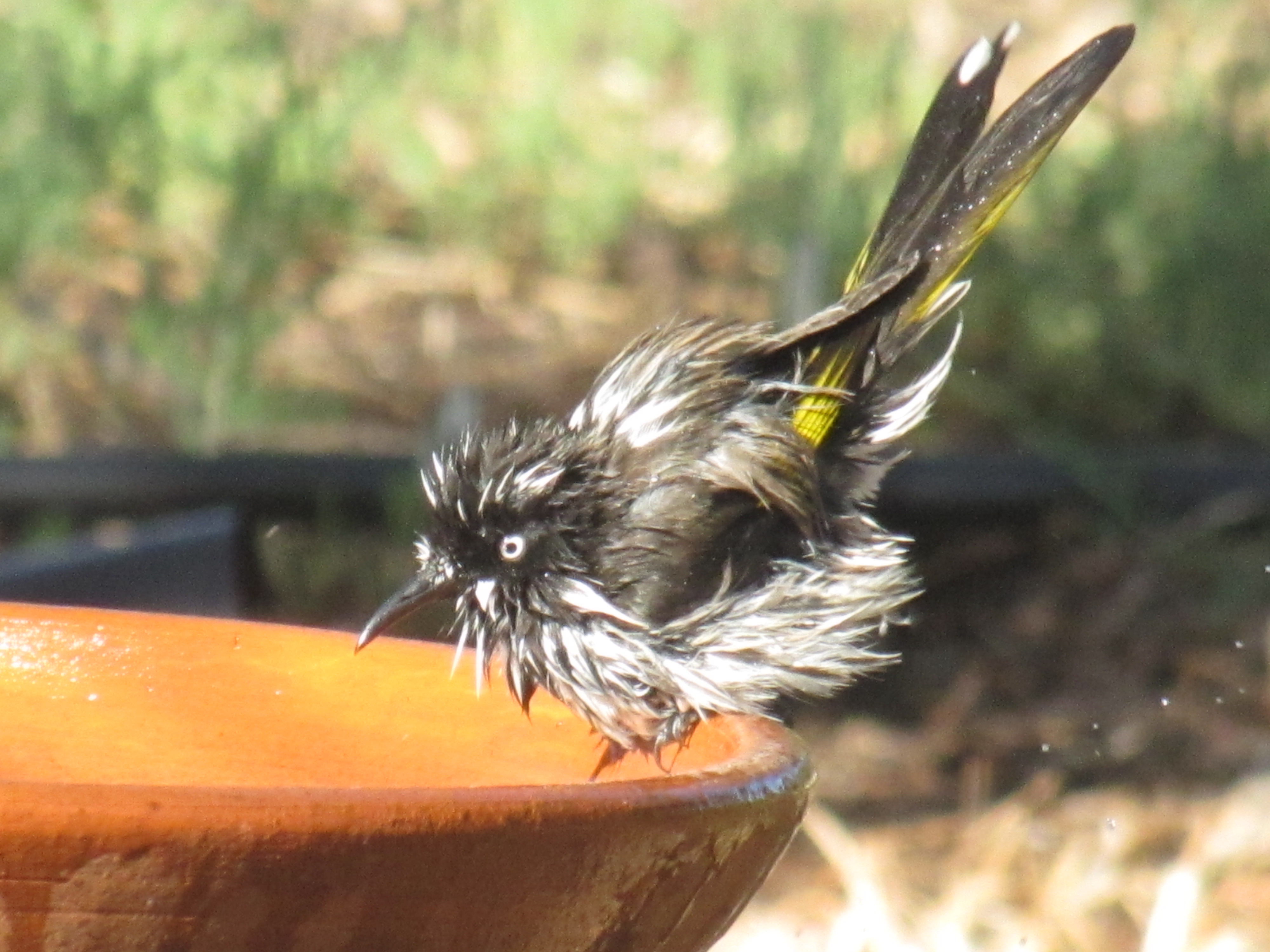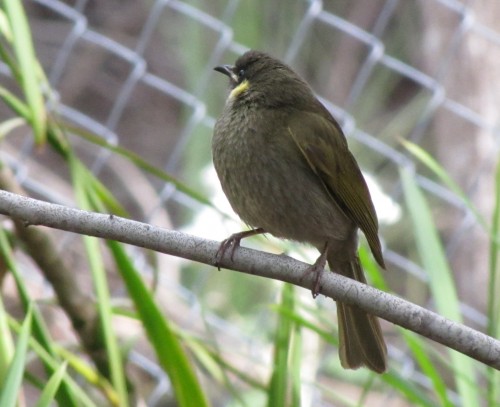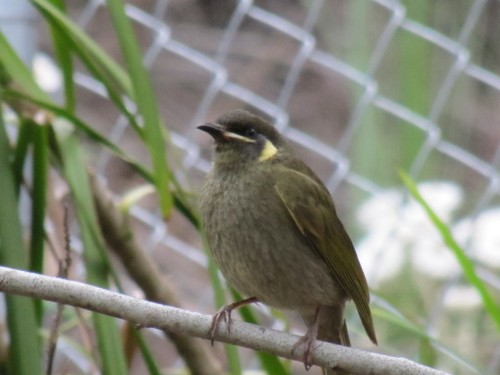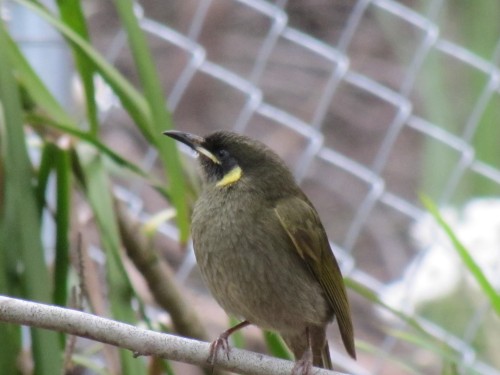Singing Honeyeater at the birdbath
Yesterday I wrote about New Holland Honeyeaters bathing in our bird bath (click here to view that post).
While the New Hollands are by far the most frequent and noisiest of the visitors to the bird bath, many other species also come to bathe or drink during our hot spells in summer. The New Holland Honeyeaters may come individually, but they are more prone to come in a flock of a dozen or more. The result is usually very noisy – and water sprays everywhere.
By way of contrast, the Singing Honeyeater shown in today’s photo quite often comes alone, or at most, two. They tend to be far more solitary birds in our garden. They often wait a short distance away while other species drink, then slip in quietly to drink when calmness returns.
Hot weather birding
We are currently experiencing another heatwave. Tomorrow is forecast to be the 11th consecutive day over 30C; some of the days – like today – the temperature has reached 40C (104F). During such days I add a bucket of fresh rainwater to the various birdbaths we have in our garden. Several of them are in clear view of where we often sit to eat, or to enjoy some reading. Sometimes I even do my writing there; it gives me a break from my office and I have a different view. The camera is usually ready for action, so on occasions I neglect my writing and attend to some serious bird photography.
During the current heatwave the birds have been coming daily to drink, bathe and generally have a good time. The parade of species is impressive. We sometimes have up to a dozen different species come to drink in a 10 or 15 minute period. Last week I captured a series of photos of about a dozen New Holland Honeyeaters having a great time cooling off in the water. Droplets fly in all directions and some are left looking absolutely drenched.
For more photos like this one click here.
Let’s all have a morning bath
Earlier this week it was rather warm. On most days we have some birds come to either have a bath, or have a drink. Many do both. Some just sit in the water, especially on very hot days.
On Tuesday of this week I was amazed at the procession of birds coming to drink and bathe. I was having my breakfast and it wasn’t yet very hot. This following is a list of species observed in a ten minute period:
New Holland Honeyeaters – about 12
White-plumed Honeyeaters – 2
Singing Honeyeaters – 2
Red Wattlebirds – 2
Crested Pigeon – 1
Spotted Turtledove – 1
Yellow Thornbill – 1
House sparrow – 10
Common Starling – 6
Australian Magpie Lark – 1
Superb fairy-wren – 3
Other species nearby:
Australian Magpie
White-browed Babblers
Willie Wagtail
The New Holland Honeyeaters caused the greatest kerfuffle; water went absolutely everywhere. I managed to capture this series of photos of one individual getting totally soaked.
Now I’ll have to get a bucket of rainwater and refill the bird bath.
Some of the photos shown here on Trevor’s Birding can now be purchased on tee shirts, coffee mugs, stationary and a large range of other items. Go to Trevor’s Photos site here.
Baby Currawongs in the garden
I had almost finished dressing this morning when my wife called to me from the kitchen. She had just seen a bird she didn’t recognise fly onto the branch of a tree in our garden. I grabbed the camera and headed out to capture said bird on film – well, digitally, anyway.
It turned out to be a very downy young Grey Currawong waiting patiently for the parents to come feed it. Both parents were hovering in the background waiting for me to move back indoors. Later, from a distance, I saw another young bird being fed in trees a little further distance from the house.
Only a few days ago I was wondering why we hadn’t seen any currawongs in our garden recently. They must have been nesting elsewhere and busy feeding these two large babies. Nice to have them around again, though the smaller birds like the honeyeaters detest them, especially when they still have young in the nest. A baby honeyeater, pardalote or thornbill makes a tasty meal for a fast growing currawong.
Lewin’s Honeyeater
On our recent visit to Sydney to stay with family, my wife and I took out an afternoon to visit the Ku-ring-gai Wildflower Garden near St Ives. we’d been here on a number of other occasions and usually enjoyed the visit.
The gardens are open daily from 8am to 5pm and are accessed off Mona Vale Road. There is no entry fee and the education centre is available for functions for a fee. Extensive walking trails and picnic areas make this a very attractive place to visit, especially for birders and native plant enthusiasts like my wife.
Over a number of visits I have sometimes been a little disappointed with the bird life, but mostly it is quite good. The thick vegetation allows a wide range of small bush birds to hide in safety, but this sometimes can cause a little frustration identifying them, and especially challenging for photography. It was with delight then, that I captured reasonable shots of a Lewin’s Honeyeater. It posed for my camera for several minutes, perching on an exposed branch in range of my lens.
This species is found along the eastern coastal regions of Australia. This was a particularly pleasing sighting as I’ve only ever seen it on several previous occasions.
